Now, as I’ve said elsewhere, in a way my advice is human training, but in truth the training is really behavior modification for both human and canine. In the process both mammals benefit. The human ends up with a canine companion that is easier to live with and the canine benefits from having some much needed social order.

Mid Level Dog Training
by LiamBean
If you've read and been successful with my "Fundamentals of Dog Training," you are now ready for the next step. Here I explain some commands I've creatively taught my dogs.
Creative Training
When I refer to “creative” training I’m really talking about how to observe behavior and creatively turn that into training. In this article I’ll give a number of examples.
But first, the back-story.
How it Began
A darned television dog
Now this gives my brother and my ages away, to some degree anyway, but as boys our parents felt very strongly that we needed a canine companion. For some reason they settled on the “Rough Collie,” (picture at left) though we didn’t know it was called that, we just called them collies. Now from a historical perspective this makes sense as we are of Gaelic ancestry and so is that breed of dog.
I’m sure also, there was some desire on our parent’s part to teach us responsibility. It didn’t always work out that way; we almost routinely shirked our duties. But we did learn about dogs and we did learn some responsibility.
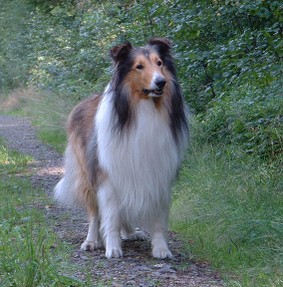 I’m also sure the program “Lassie” had a lot to do with that decision too.
I’m also sure the program “Lassie” had a lot to do with that decision too.
In fact the program had another effect. We both wanted our dog (the first one named “Lassie” of course) to be just as smart as the dog on the program. Being pre-teens at first we just thought our dog was dumb. Don’t get me wrong, we still had a lot of fun with her, she loved to rough-house with us and was very loving. After we’d all wrestled around in the yard for a while all three of us, me, my brother, and the dog, would collapse in a heap.
One day a neighbor, another dog lover, overheard my brother and I bemoaning the fact that as much as we loved “Lassie,” she was none too bright. He quickly set us straight. We had no idea that this brilliant dog on television had been taught to do all those things by a human. Our neighbor showed us how to get her to sit and that lit a fire under us. Surely our “Lassie” could be just as smart as that dumb old television dog.
Scratch to Go Out
Like most suburban families in the 1960s we had a modern split level bungalow to live in. We had a fenced yard with about an acre of land. If the dog needed to “go” we just let her out the back door and she took care of “her business.” Of course the dog let us know by whining.
But one of us, and I’m not sure which one, hit on an idea. Why not “teach” her to show us another way.
So here’s what happened. We’d hear her whine to go out and one of us would hold her rear so that her whole body was near the door and the other picked up either paw and manipulated it so that she “scratched” at the door. Within two days she started scratching first and then whining if no one paid attention to her.
Shake "Hands"
Now that “we’d” mastered “scratch to go out,” we decided to embark on a program that would endear our dog to less dog friendly neighbors. Ah, we were so naïve, but that is a tale for another time. However, with that goal in mind we decided to teach our dog how to “shake hands.”
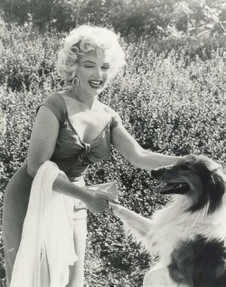 Of course a dog does not have hands, they have paws. Now here’s something we weren’t aware of until we began our training program. Dogs don’t like to have their paws grabbed. This is only natural I suppose. If someone I didn’t know (or did know for that matter) suddenly decided to grab my foot I’d resist or possibly even become quite alarmed.
Of course a dog does not have hands, they have paws. Now here’s something we weren’t aware of until we began our training program. Dogs don’t like to have their paws grabbed. This is only natural I suppose. If someone I didn’t know (or did know for that matter) suddenly decided to grab my foot I’d resist or possibly even become quite alarmed.
This was the state of things with “Lassie” so our first course of action was to get her used to having her paw held. This took quite a while, but we were eventually successful.
The next step was to get her to offer her paw when we told her “shake.” This was much more difficult. We’d take her paw, wave it up and down and say “shake,” but “Lassie” never got it.
One day, out of pity for our dog, one of us began stroking her chest and telling her it was OK that she didn’t get it. She offered us her paw. This was the key. If we stroked her chest she’d raise her paw. Then it was only a matter of saying “shake” as we stroked her chest and she offered her paw. We would also put our hand out so her paw would fall right into it. Before long she would offer her paw when she heard that word.
What is the point of this story? Attempting to train a dog a standard way will probably cause a lot of frustration for both you and the dog. Observe your dog, see what works, and use what you learn from him or her to accomplish a training task.
Roll Over
This was one of the easiest, but it did require treats. One of us would get her to lie down, the other would say “roll over,” and the first of us would roll her over. About three days of this and she got it. Of course a dog snack helped things considerably.
Down
By this time teaching her other things was becoming quite easy. She was expecting something when we stressed a word, but this time we simply waited until she got down in a prone position and said the magic word “down.” In two days time she would lay down when she heard the word.
Training books
All of the books below come with strong recommendations from Amazon customers.
Coda
The point of this article is that if you attempt to train your dog with someone else’s techniques you might very well meet with disappointment. Rather, observe your dog, get a feeling for what motivates him or her, and take advantage of situations where the dog is doing what you want without a command. Simply add a command to the action when you see it.
I am by no means recommending that you use the tricks that we did; those may not work. What I am recommending is that you watch your dog closely, take advantage of opportunities, and always be patient.
You might also like
Training Your Dog with DistractionsHow to get your dog to listen to you when there are more interesting things t...
German Dog CommandsA list of the most common German dog commands, with pronunciations and examples.
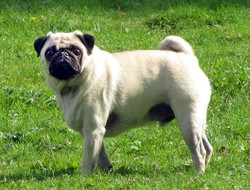





 Crêpes and Crêpe Disheson 09/14/2016
Crêpes and Crêpe Disheson 09/14/2016
 About Me - Liam Beanon 11/28/2014
About Me - Liam Beanon 11/28/2014
 About Ebolaon 11/08/2014
About Ebolaon 11/08/2014

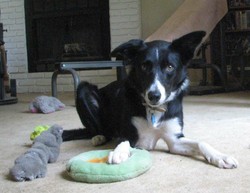
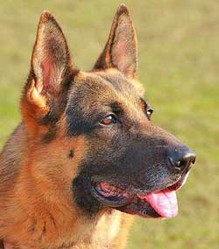
Comments